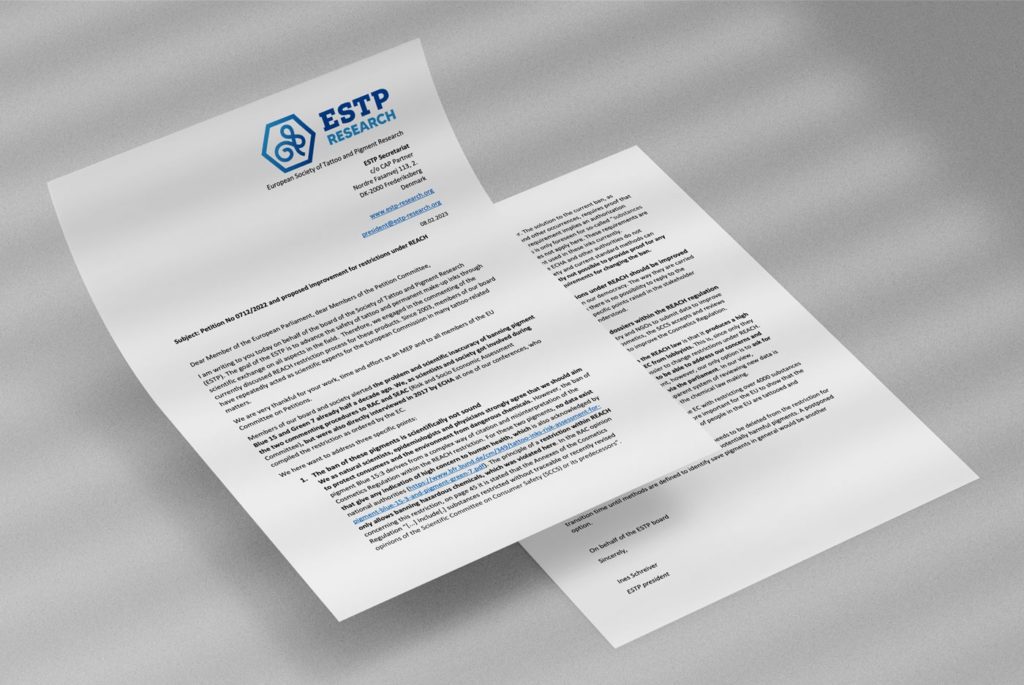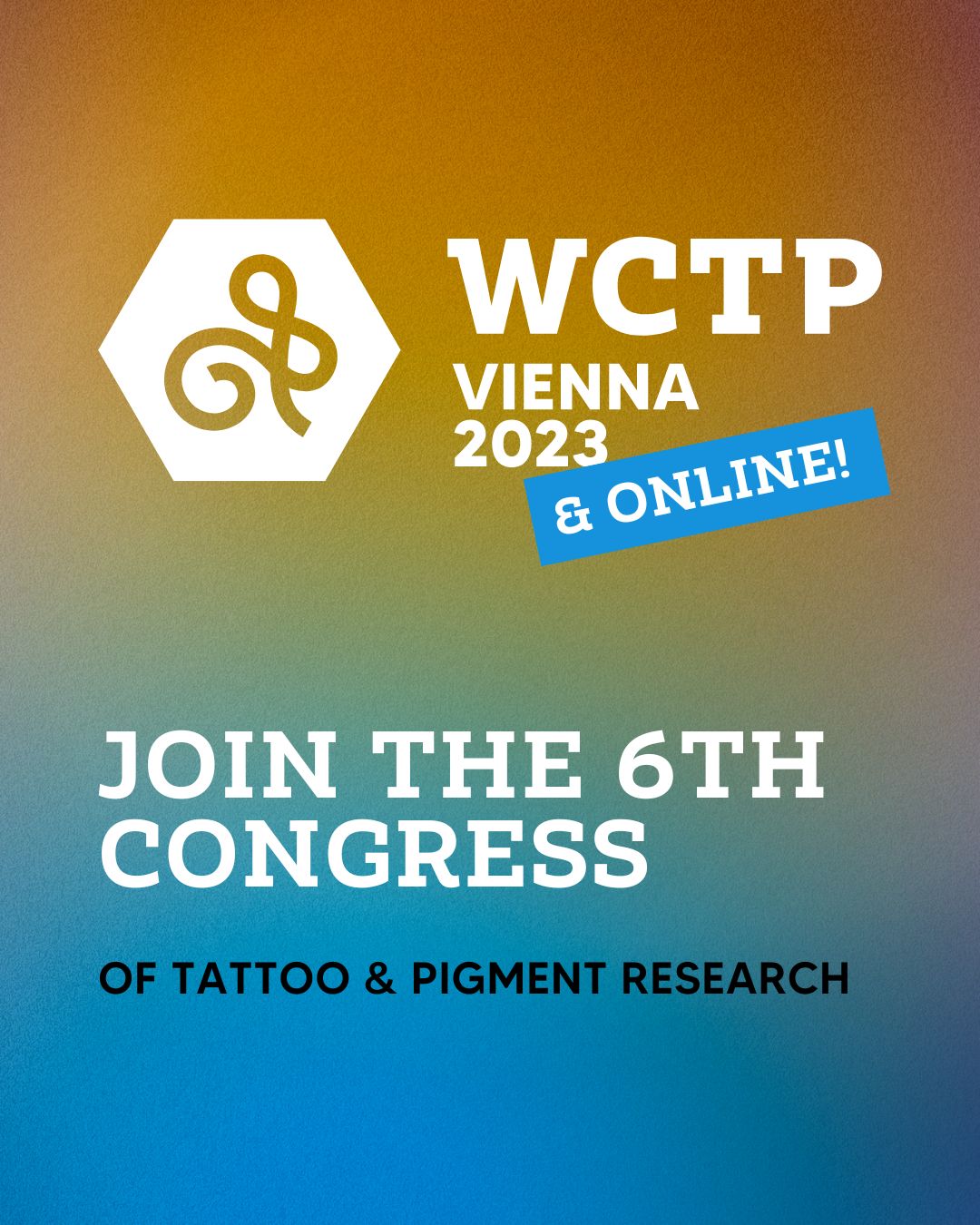
On January 26th, the Petitions Committee of the European Parliament met to which, among others, Michael Dirks and Erich Mähnert, the petitioners of the second Savethepigments petition, gave an impressive speech.
A recording of the session can be viewed via the following link.
In order to share our knowledge on tattoo safety, we drafted a letter to the European parliament.
These are the main points we addressed:
- The ban of these pigments is scientifically not sound
We as natural scientists, epidemiologists and physicians strongly agree that we should aim to protect consumers and the environment from dangerous chemicals. However, the ban of pigment Blue 15:3 derives from a complex way of citation and misinterpretation of the Cosmetics Regulation within the REACH restriction. For these two pigments, no data exist that give any indication of high concern to human health, which is also acknowledged by national authorities (https://www.bfr.bund.de/cm/349/tattoo-inks-risk-assessment-forpigment-blue-15-3-and-pigment-green-7.pdf). The principle of a restriction within REACH only allows banning hazardous chemicals, which was violated here. In the RAC opinion concerning this restriction, on page 45 it is stated that the Annexes of the Cosmetics Regulation “[…] include[.] substances restricted without traceable or recently revised opinions of the Scientific Committee on Consumer Safety (SCCS) or its predecessors”. We invite you to also seek legal advice in this matter. The solution to the current ban, as emphasized by the EC in a webinar in March 2022 and other occurrences, requires proof that these two pigments are not harmful to health. This requirement implies an authorization before using these two pigments for tattooing. This is only foreseen for so-called “substances of very high concern” under the REACH law and does not apply here. These requirements are also not applying to any other pigment or ingredient used in these inks currently. Furthermore, providing these data is difficult as the ECHA and other authorities do not disclose which data they would accept to proof safety and current standard methods can often not be used for pigments. Hence, it is currently not possible to provide proof for any pigment to declare it as “save” to fulfill the EC requirements for changing the ban. - The process of drafting and reviewing restrictions under REACH should be improved
We agree that public hearings are key to strengthen our democracy. The way they are carried out is, however, a limited democratic process since there is no possibility to reply to the ECHA comments. This can already be necessary if specific points raised in the stakeholder comments were by accident not answered or misunderstood. - A scientific committee is needed for external dossiers within the REACH regulation
There is currently no official way for science, industry and NGOs to submit data to improve the restriction under REACH. As comparison: For cosmetics, the SCCS accepts and reviews scientific dossiers and prepares recommendations to improve the Cosmetics Regulation. The danger that comes with this missing module in the REACH law is that it produces a high pressure on national governments, MEPs and the EC from lobbyists. This is, since only they are able to mandate the ECHA to compile a new dossier to change restrictions under REACH. For example, we would have very much preferred to be able to address our concerns and data to a scientific committee today. At the moment, however, our only option is to ask for your support as MEP in order to obtain a decision via the parliament. In our view, establishment of an official committee with a transparent system of reviewing new data is urgently necessary to strengthen the democracy in the chemical law making.

